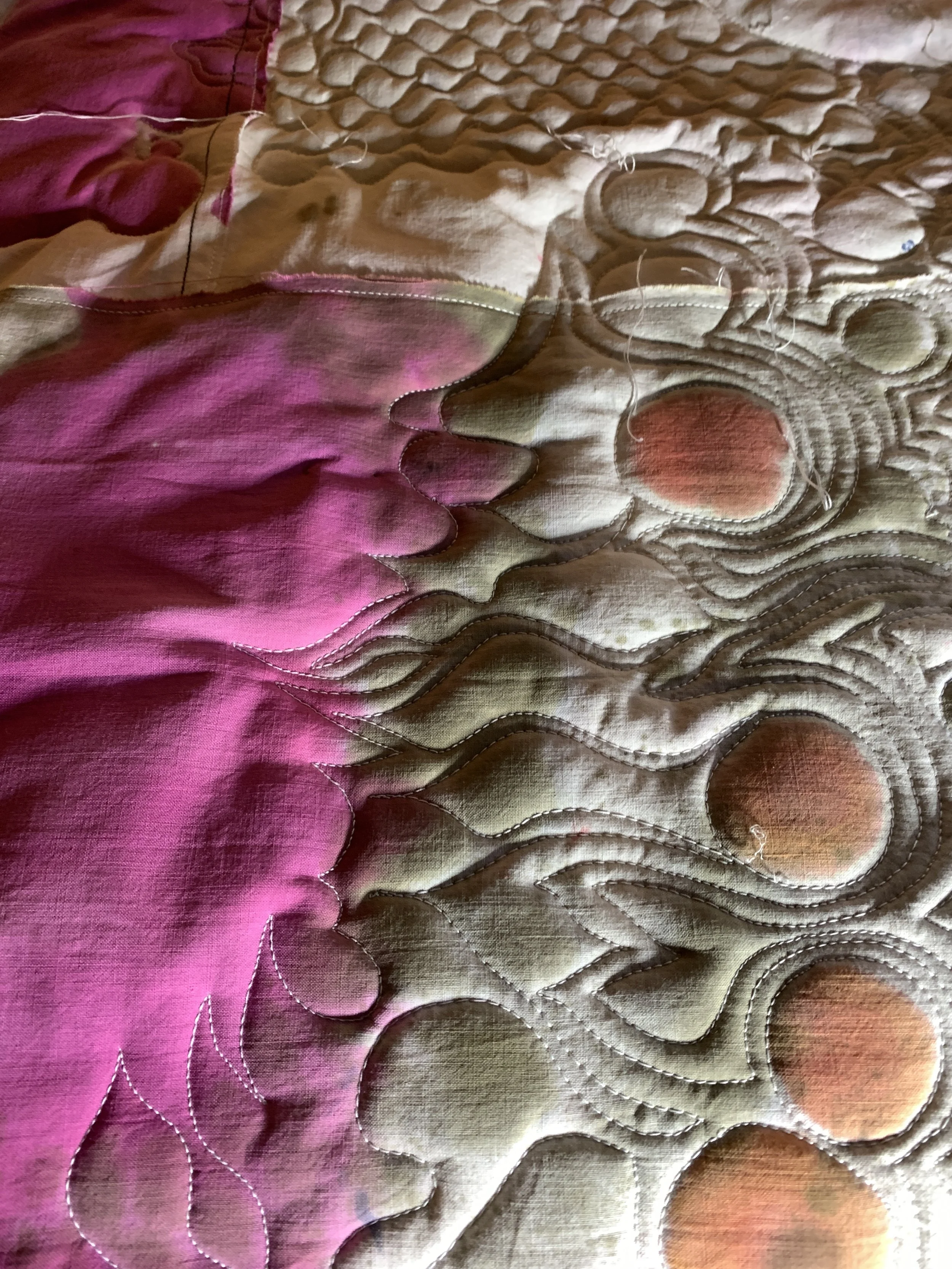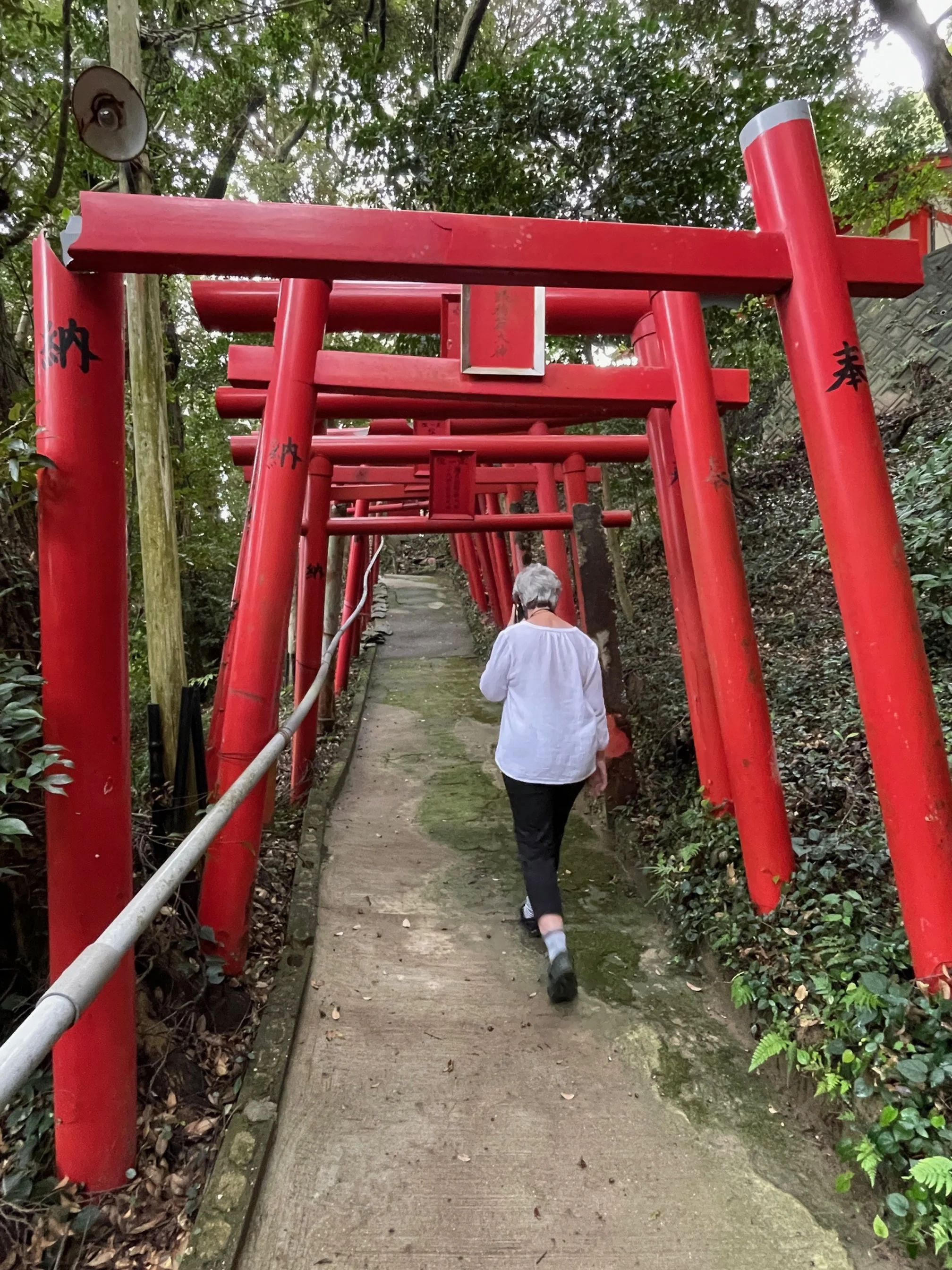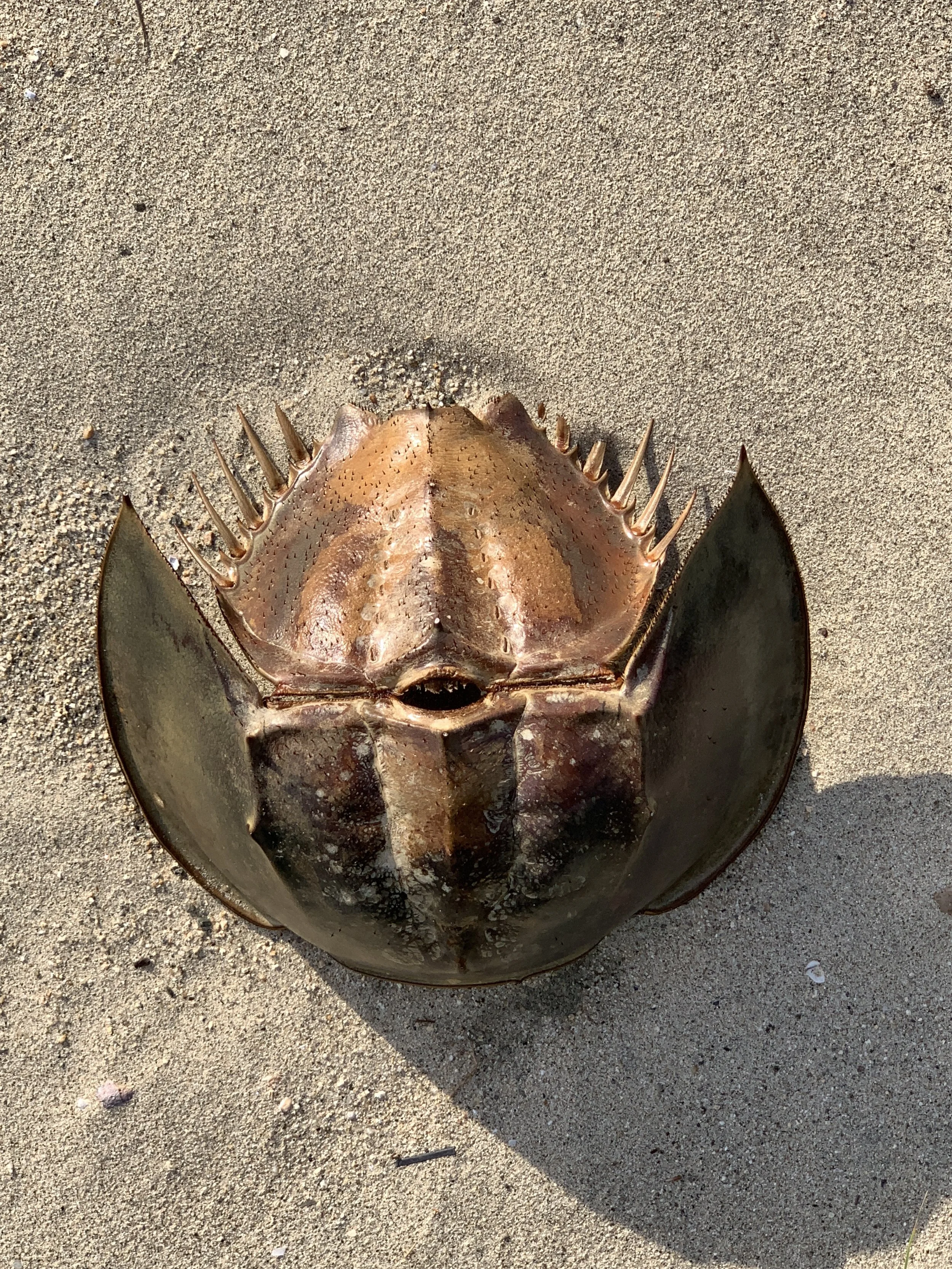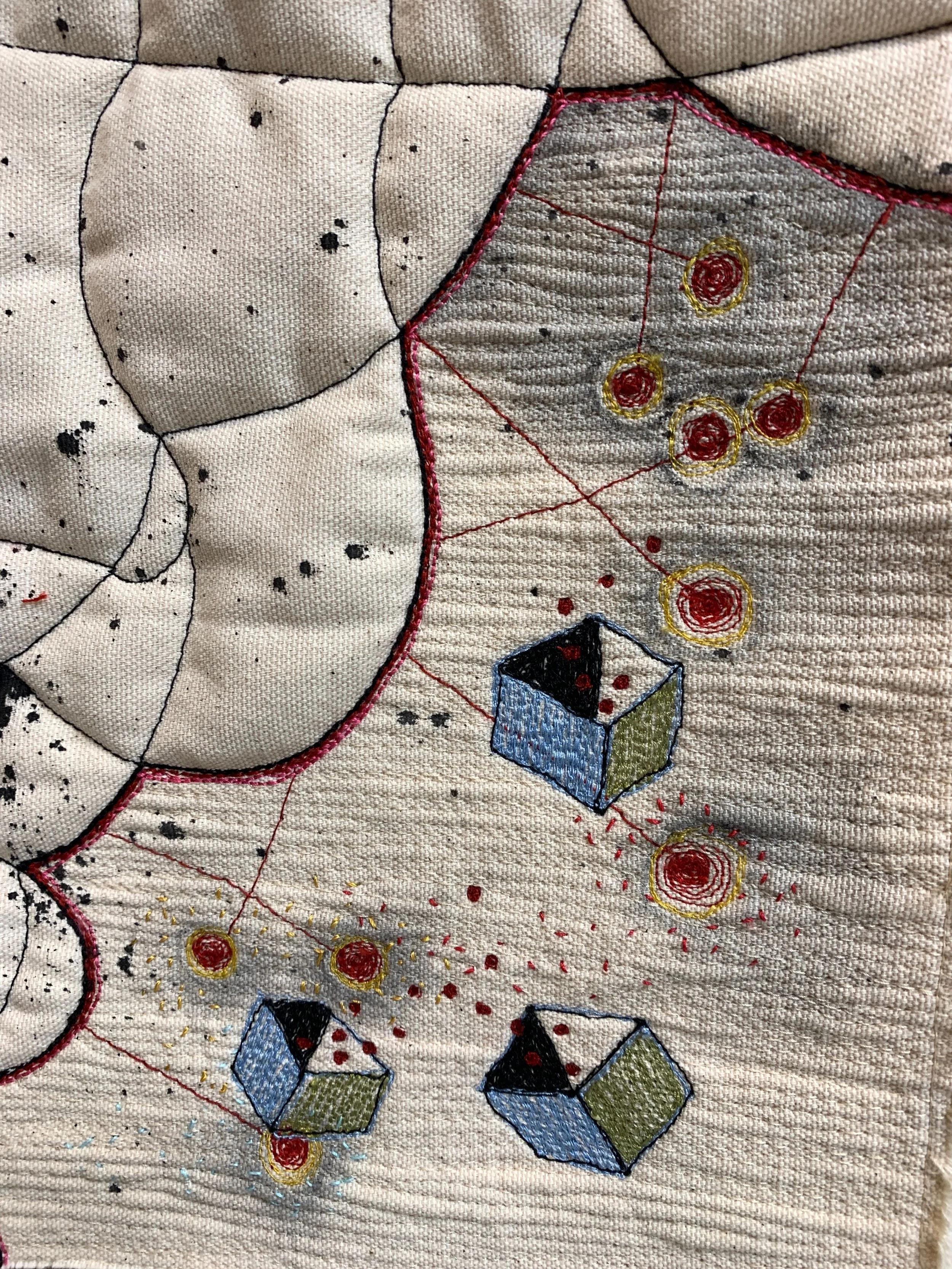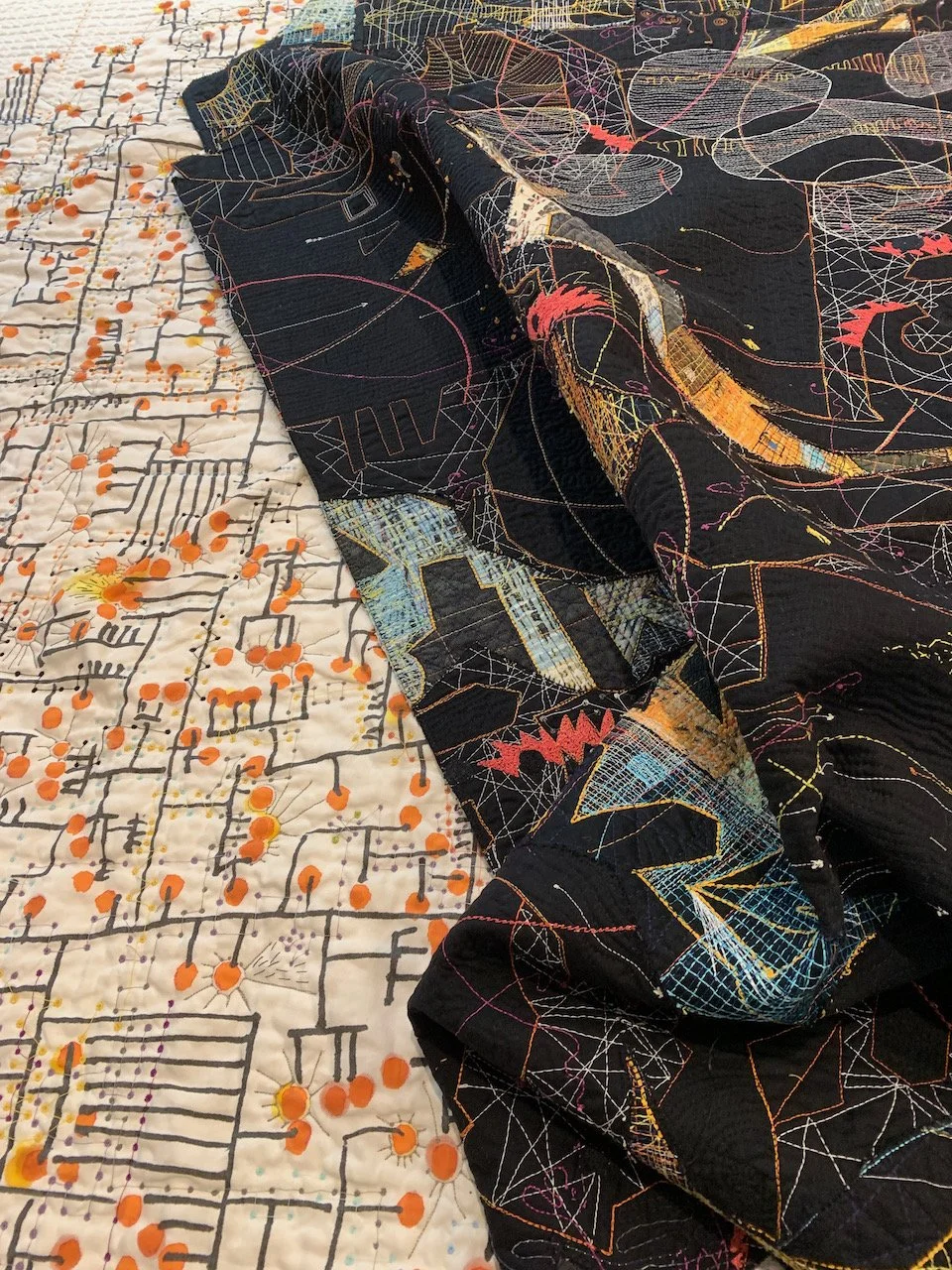Working on the last bits of a piece can be like standing in line at a government bureaucracy. Tedious buzzing calculations — how many more stitches for that one last line of stitching? Will the employee behind the counter tell me I am in the wrong line after standing (im)patiently for an hour in the first line? Can the exhibit use a staple gun to put my piece up instead of me having to stitch a sleeve to the back? Tedious buzzing reminders that this is a slow art.
Tying this piece every two inches with crochet thread has given it a new dimension as well as a blister on my left middle finger.
I start to question my sanity when I work on little details for days on end and then tear half of them away. Or when I decide to add another layer to an already complicated collage. Is this layering saying something about my state of mind? Short answer: yes.
Pollinators is an assemblage of details tied together with details.
The rewards? Meditation, escape, complexity, depth, and mystery. I let the thread lead me.
This piece on nuclear arms testing had to have some olive branches drifting to the edge.





